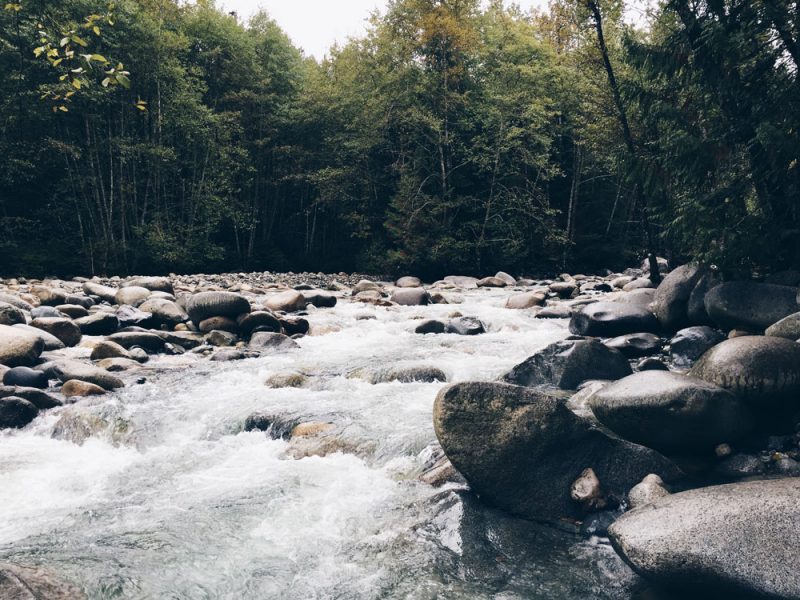
Hiking is one of the best ways to get some exercise and spend time in the beautiful outdoors. There are thousands of great hiking treks, but on some of the routes, you will need to cross a river. It’s important for all hikers to know how to cross a river safely by understanding their limits and the necessary skills required.
We’ve put together a step by step guide that will not only help you get across the river safely but will also provide you with some pre-adventure preparation tips.
Remember, never put yourself at risk, if the river looks too dangerous, turn around and go back the way you came or find another path.
Get Yourself Prepared
Before you set off for your hike, there are a few preparation tips that you should consider:
Check the conditions – Depending on the season that you’re hiking in, the speed of a river’s flow will differ. Winter tends to make the rivers fast and high, whereas, during the summer, the flow is weaker and slower. That’s why when you’re out hiking, you need to consider the season, as well as the route you are taking. Rivers can get slippery with algae and the last the thing you want is a twisted or broken ankle in the middle of a river.
Besides the season, you should also check to see what the weather will be like on the days you plan on hiking. If it looks stormy, look online to see if there are any updates on the area you’re going to, or you could contact the park rangers for advice.
Take trekking poles – If you’re walking in wet and slippery conditions, it’s not unlikely that any rivers you need to cross will be higher and flowing faster than usual. Trekking poles will become your best friend during these circumstances. Not only will they stabilize you while walking through boggy areas, but they’ll also provide support when you’re crossing a river. If you don’t own hiking poles or you forget to take them with you, find a good sturdy branch.
Wear some shorts – We’re not suggesting that you go out wearing shorts during the cold winter, but if the weather is warm or mild, shorts are going to be your best option. When you’re crossing a river, you don’t need to worry about rolling up pants or getting them soggy as your shorts won’t touch the water.
Consider hiking sandals – Again, this isn’t something you’ll want to wear during the winter as your toes will go numb, but if the weather is warmer, hiking sandals are great. When you’re wearing hiking boots, you don’t want to trod through the water and get your feet soaking wet. They’ll take ages to dry, and you’ll be squelching for the rest of the walk.
With walking sandals, you still get good solid soles, but instead of jumping from rock to rock, you can simply walk through the water, and they’ll dry off a lot faster. If you don’t want to wear hiking sandals for the entire walk, just wear your regular boots. You can just pack them in your bag and switch when it comes to crossing the river.
Approaching the River

When you get to a river bank, before you cross the water, you need to assess how safe it is. Where you arrive at the river from the trail isn’t necessarily the best or most reliable spot to cross at. There are few points that you need to look out for:
Avoid debris – If you notice any logs or branches floating in the water nearby where you want to cross, look for a different spot. When you see wood or branches in the river, it’s a sign that the water is high and the current is strong. You’ll be putting yourself at risk of an accident.
Avoid knee deep water – If the current is flowing fast, and the water appears deeper than knee high, don’t wade through. The river could take you, and you’ll potentially get hurt on debris or rocks.
Look for river breaks – Where the river branches; the width will be wider. You may be able to find a small area of land here that you can rest on when crossing the river.
Assess the current – Find a large branch and throw it into the river. If it quickly gets pulled down the river by the current, you’ll know the direction of the flow and also the strength. You’ll be able to plan your crossing a lot more strategically.
Loosen up your backpack – When you’re ready to cross the river, there’s one more thing that you need to remember: untie your backpack from around your waist. If you slip and fall over into the water, untying the bag from your waist makes it easier to ditch. If your backpack became wet and cumbersome from the water and you were struggling to get the bag off, it can drag you down, and the current can take you with it.
Walking Across the Stream
You may think that this tip is quite self-explanatory, you just move your legs and walk right? Well, technically, yes that is the case, but to stay safe, there’s a certain technique that you should use. Don’t try and walk across the river quickly, take your time. The river rocks can be slippery, sharp and also unstable. If you’re going too fast and step on a stone that is wobbly, you can lose your footing, slip over and potentially injure yourself.
Rather than lifting your feet, slide them forward. This technique allows you to feel what’s under your feet and gives you more stability. You should also move diagonally, towards the flow of the water, when you’re crossing the river to the other bank side.

 Your Privacy Choices
Your Privacy Choices
 The
The